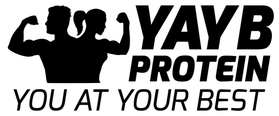How Much Volume is Too Much

Volume is a topic that is discussed heavily, how much is enough and how much is too much in order for us to recover effectively. Do we push ourselves to constant failure or do we leave ourselves falling short of the exhaustion phase? This is what we will discuss over the next blog, we will look at the progressive overload principle, take a look back at some old school training principles and also some of the newer. To find out what is best practice and if there indeed is an optimal way to train.
So, what is volume? Essentially it is how much work we complete over the duration of a workout. This can be broken down into weight lifted, sets performed and also the reps we complete. Over time it is important to monitor all of these above variables, thus to make sure we are performing more volume than in previous workouts, this principle is known as progressive overload. Progressive overload is an essential factor and will determine the overall progress you make in the gym and in a big way your physique.
Having spoken about progressive overload, now we will take a look at some old school bodybuilding techniques. Training has evolved over the years, Arnold and the bodybuilders of old would train multiple times per day, for hours on end in order to grow, be the champions they were and overall, win Olympia titles. For the “normal” person however that isn’t really possible, we have schedules, we work normal jobs and on the most part we are on less ‘supplements’. The amount of volume they used to perform would not be ideal for most and in fact would probably be counterproductive for your everyday person.
How much volume is the right amount and how should you structure your training? typically you see a large range of training programmes performed this day and age. You will see programmes laid out over a number of days, the most important thing to remember is that whatever you decide, it should suit your lifestyle. Whether you want to structure your training over 3,4,5 or maybe even six days, that is totally up to you. Most beginners will want to structure training over less rather than more days, this in order to not tire themselves and to keep them psychologically interested. Giving a ‘newbie’ a six-day training programme consisting of lots of exercises and volume may be ok for a week or two but after that they may struggle to keep with the pace.
When programming your routine, it is important to pick an amount of work you feel comfortable doing, fit the amount of days around your schedule and then choose the routine. Depending on how many days you decide to train, this will play a part in the routine you select. Various routines can be used, from Push, Pull & legs, Upper & Lower or an old school 5-day split, they could all work. Each session for a beginner may consist of 4-5 exercises, this will suffice! And doing this over 3-4 days would be enough. The more experienced may wish to do more exercises during a workout, and they may also prefer to workout for more days during the week! This is preferential, but it is important not to do too much, even more so for the beginner.
Moving onto sets and reps, this can really vary depending on your goals! Ideally for the beginner you are not going to be trying to lift too heavy, so sticking to a routine involving 8-12 reps will be enough. You could go above that if you wish but for muscle building (hypertrophy) this would be your ideal rep range. From there, 4-5 sets per exercise would be a good number for you to use, once again there is no need to over exert and perform many more sets, especially in the early days of your training. The more experienced could perform more depending on their programme but if you are using appropriate weights during your sets, there should be no need for a high amount of sets per exercise. Remember the goal is to perform better than you did the previous week, once you have done so, lots more sets and reps may be unnecessary.
Don’t chase the pump! Although it is nice to feel your biceps tingling, finding the pump isn’t an indicator of a good workout. Remember to use the progressive overload principle, it doesn’t matter if you are a beginner or an expert, this should be your primary goal each session. Chasing the pump without tracking your lifts and workouts could lead to either unnecessary reps, the load you lift not increasing or even the load to decrease should you forget what you lifted in previous weeks. All of these will lead to a standstill, your workouts won’t get better and your physique plus goals will ultimately suffer.
The TAKE AWAY message..
Take control of your workouts and use the progressive overload principle! Aim to beat your workouts each week without chasing inessential pumps. If you are a beginner, don’t try to do too much! Ease yourself in and increase your volume over time, using the above principles we have spoken about previously. Track your workouts, write them down or log them onto an app on your smartphone, doing so will make it easier over the long term! Be smart with your training, don’t train senseless and aim to frag yourself, doing so is counterproductive and may lead to the dreaded plateau!
Thank you,
David Clayton Charlesworth.
DC Fit.
